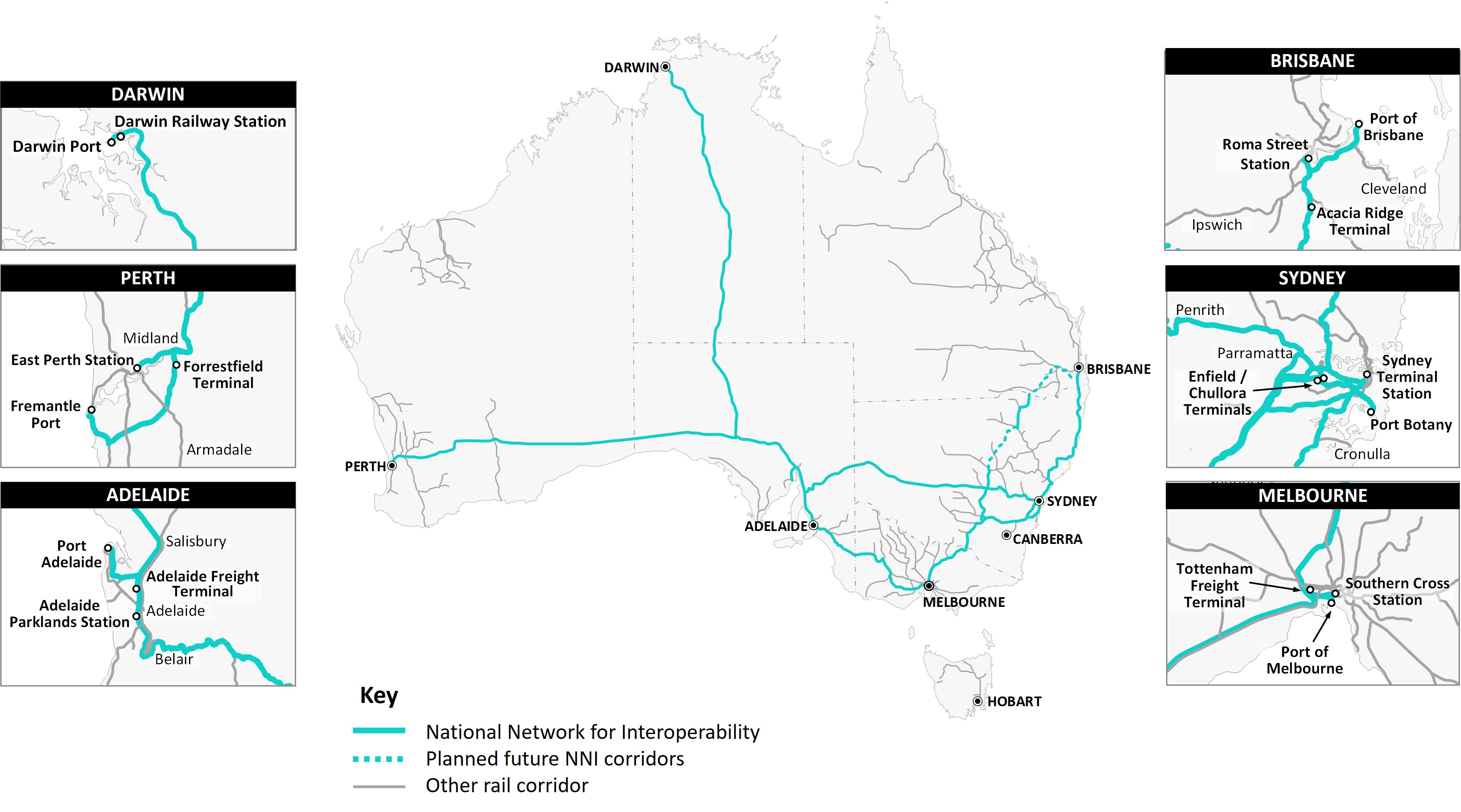Mapping critical freight and passenger rail corridors

Through the National Rail Action Plan (NRAP), the NTC, together with governments and industry, has developed the National Network for Interoperability (NNI).
The NNI defines the key interstate freight and passenger lines connecting Australia’s ports, regions and cities. It highlights the individual networks that make up these corridors, the organisations that manage them, and the critical interfaces where interoperability is essential to enabling rail to play a bigger role in the national economy.
Much of Australia’s national rail reform effort is focused on these corridors — lifting productivity, safety and sustainability across the national network.
As part of this, the NTC is progressing changes to the Rail Safety National Law (RSNL) regulations. These will require rail transport operators on the NNI to consider national interoperability and include an Interoperability Management Plan in their Safety Management System when planning operational changes.
An interactive map is now live will be updated as Australia’s freight and passenger networks expand and evolve.
How to participate
If you have feedback, send us an email as we'd like to hear from you.
- Log in to post comments
